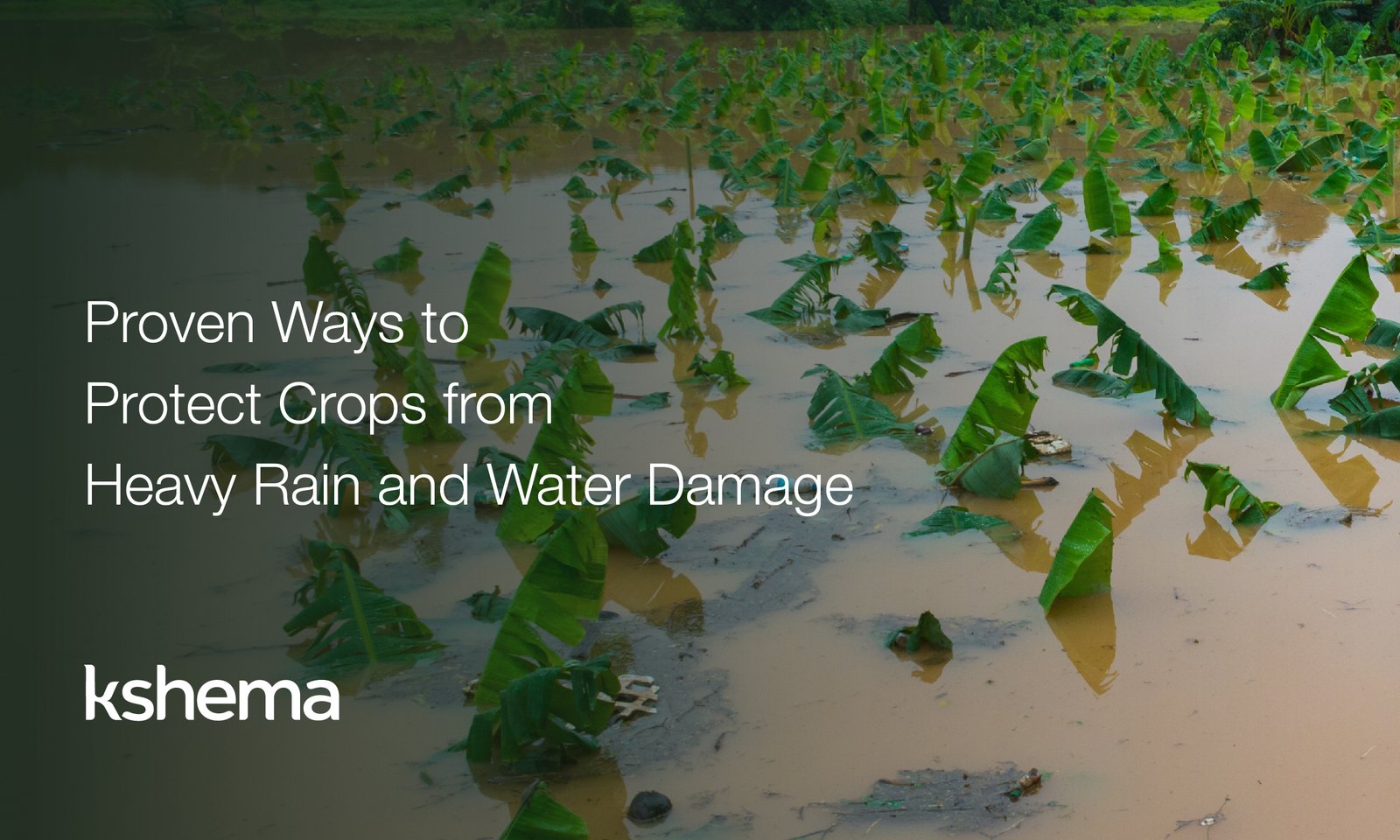Heavy rains and water damage can wreck havoc on crops, significantly impacting agricultural productivity and farmers’ livelihoods. With the growing unpredictability of weather patterns, it has become increasingly crucial to implement basic strategies to protect crops and ensure their survival during heavy downpours. In this article, we will explore proven ways to protect crops from heavy rain and minimise water damage, enabling farmers to safeguard their investments and sustain yields.
-
Choose Resilient Crop Varieties:
One of the most effective ways to mitigate water damage is planting resilient crop varieties that can withstand heavy rain. Opting for seeds that are bred for high tolerance to waterlogging and excess moisture always helps. Such varieties are often equipped with deeper root systems or natural resistance to diseases that thrive in wet conditions. Additionally, mixing multiple crop varieties on the same land can enhance the field’s resilience, as diverse species often respond differently to excess water, reducing overall risk.<
-
Implement Proper Drainage Systems:
A well-designed drainage system is essential to prevent water stagnation during heavy rains. Farmers can create channels or ditches to direct excess water away from fields. Installing underground drainage pipes in water-prone areas can also aid in removing surplus water efficiently. Raised beds are another effective solution, as they elevate the crops above potential waterlogging zones. Proper maintenance of these systems, including clearing debris and sediment, is vital to ensure smooth water flow.
-
Construct Raised Bunds and Embankments:
For farms situated in low-lying areas, constructing raised bunds or embankments around fields can act as a barrier to prevent water from inundating the crops. These structures help to control the flow of water and minimise soil erosion. In areas prone to flash floods, bunds can also act as a shield, reducing the direct impact of rushing water on fragile crops.
-
Adopt Mulching Techniques:
Mulching involves covering the soil surface with organic materials such as straw, leaves, or compost. This technique not only conserves soil moisture during dry periods but also protects soil structure during heavy rains. Mulch helps to reduce the impact of raindrops on the soil, minimising compaction and preventing erosion. Additionally, it serves as a barrier that slows down water movement, allowing time for absorption and reducing runoff.
-
Practice Contour Farming:
Contour farming, or cultivating along the natural contours of the land, is a time-tested method for water management. This technique slows down water flow, preventing it from eroding topsoil or pooling excessively in one area. The ridges created by contour ploughing act as barriers, helping to distribute rainwater more evenly across the field. This practice is especially beneficial for sloping terrains.
-
Incorporate Cover Crops:
Planting cover crops like clover, rye, or legumes during off-seasons can improve soil health and structure. These crops act as a protective layer, reducing the direct impact of heavy rainfall on the soil. Their root systems enhance water absorption and help prevent soil erosion. Additionally, they enrich the soil with organic matter, making it more resilient to future weather challenges.
-
Strengthen Soil Health to Protect crops:
Healthy soil is the foundation of crop protection during adverse weather conditions. By adding organic matter such as compost or manure, farmers can improve soil’s water-holding capacity and aeration. Practices like crop rotation, no-till farming, and avoiding overgrazing can further enhance soil resilience. Strong, well-structured soil is less likely to be compacted or washed away during heavy rains.
-
Use Protective Covers and Tunnels:
For crops that are particularly vulnerable to heavy rain, using protective covers such as plastic sheets, polytunnels, or shade nets can be highly effective. These structures act as a shield, keeping excess water off the plants while allowing sufficient air circulation. Polytunnels are especially useful for high-value crops, as they offer controlled environments and protect against both rain and pests.
-
Plan Better with Weather Forecasting:
Modern technology has made weather forecasting more accurate and accessible. Farmers can use weather apps, local advisories, or automated systems to prepare for upcoming heavy rains. Early preparation allows farmers to adjust irrigation schedules, harvest vulnerable crops in advance, or deploy protective measures like covers or drainage checks.
-
Engage in Water Harvesting:
Heavy rains can be turned into an opportunity for water conservation through rainwater harvesting. Constructing farm ponds, reservoirs, or check dams can help collect and store excess rainwater for future use. These structures reduce surface runoff and provide a sustainable water source during dry periods, ensuring long-term productivity.
-
Promote Community Collaboration:
Collaborative efforts among local farmers can amplify the impact of crop protection measures. Sharing resources like drainage systems, embankments, or equipment can reduce individual costs. Collective planning for water management can also lead to better outcomes, especially in regions frequently affected by heavy rainfall.
Also Read: https://kshema.co/crop-protection-solutions-and-insurance-work-together/
Conclusion
Protect crops from heavy rain and water damage requires a combination of proactive planning, sustainable practices, and timely interventions. By investing in resilient seeds, maintaining drainage systems, adopting traditional techniques like contour farming, and leveraging modern tools such as weather forecasts, farmers can significantly minimise the adverse effects of heavy rainfall. These proven strategies not only safeguard crops but also contribute to the long-term health of the farmland with sustainable agriculture ensuring food security.







